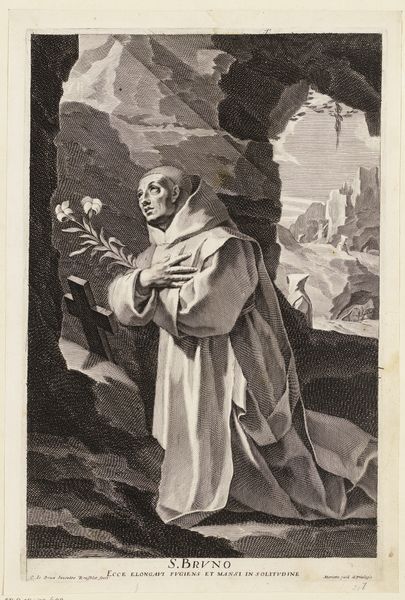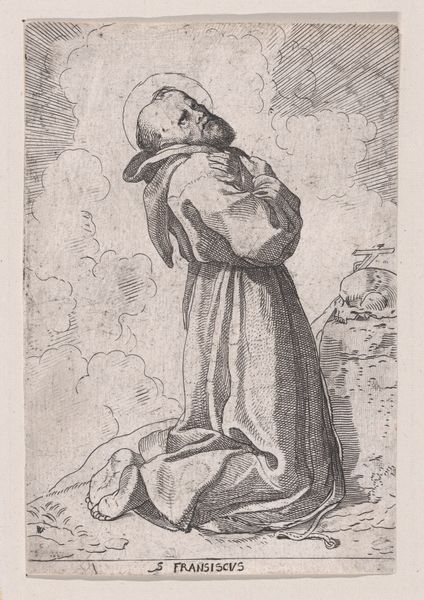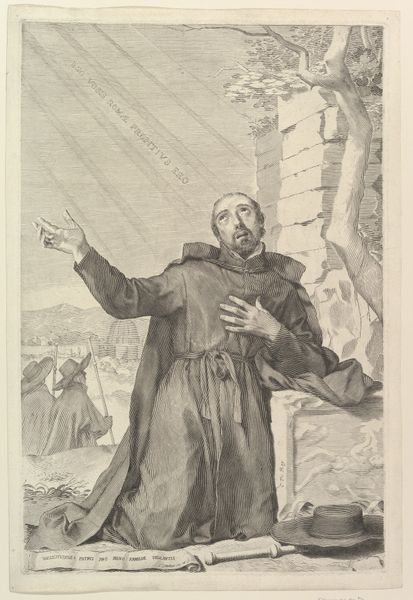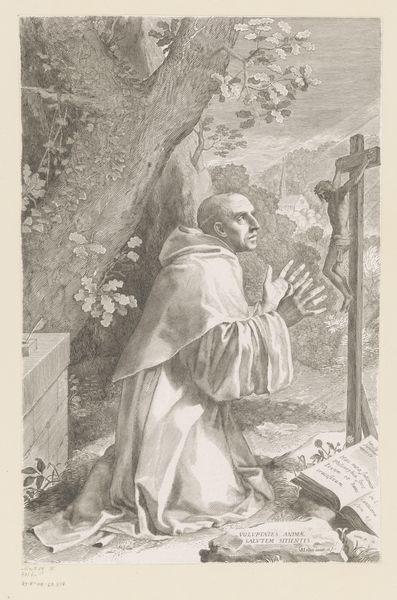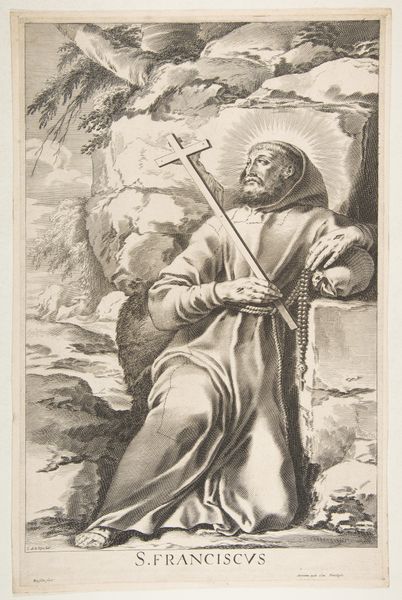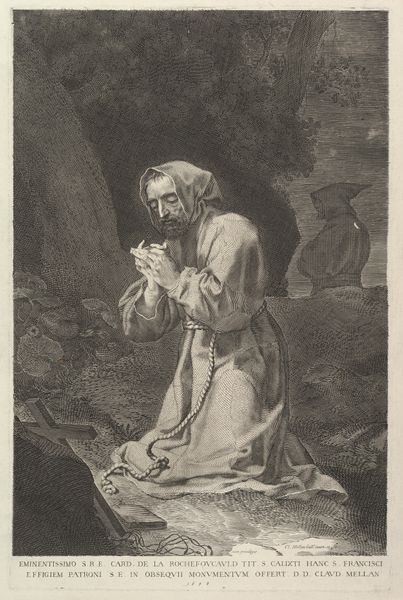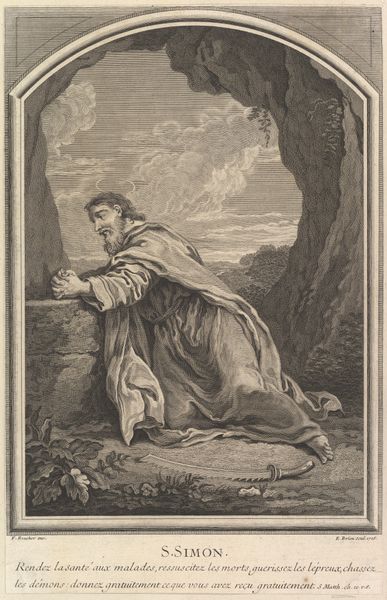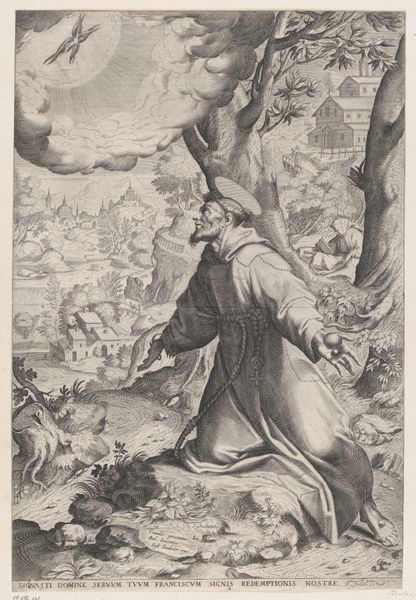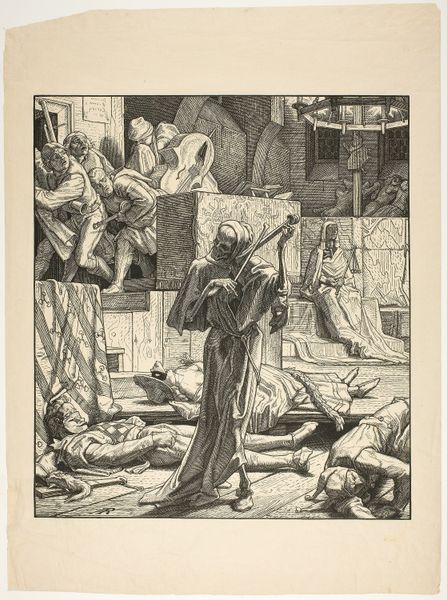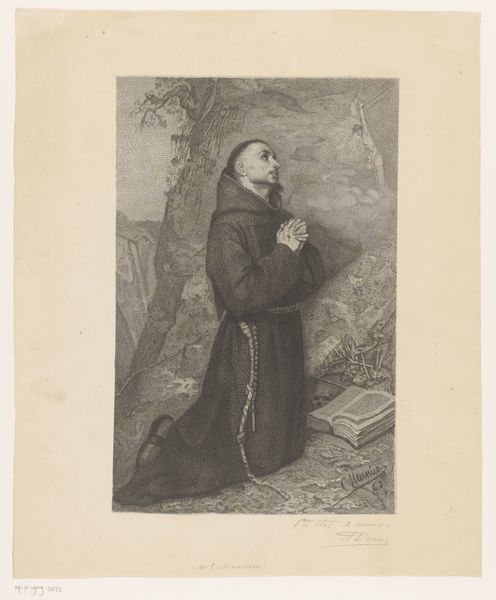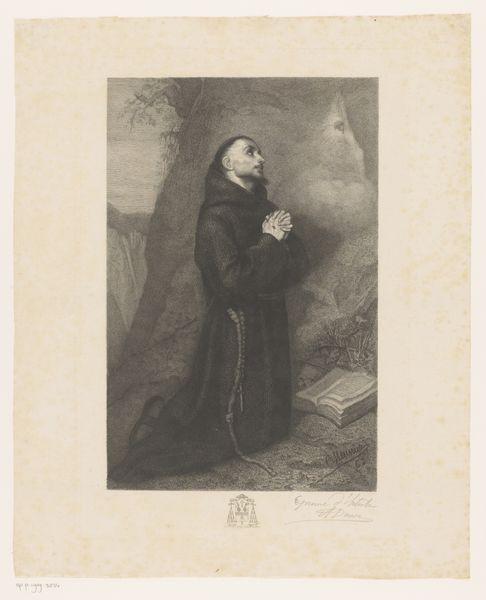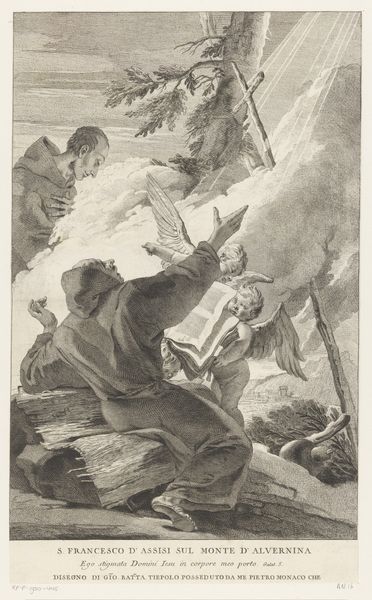
#
pencil drawn
#
aged paper
#
toned paper
#
light pencil work
#
pencil sketch
#
old engraving style
#
charcoal drawing
#
personal sketchbook
#
pencil drawing
#
pencil work
Dimensions: height 388 mm, width 246 mm
Copyright: Rijks Museum: Open Domain
Editor: Here we have Gilles Rousselet's "Heilige Benedictus," created between 1650 and 1655, now residing in the Rijksmuseum. It has an almost ethereal quality, given the light pencil work and toned paper, and I’m curious about the symbolism behind the praying figure and the seemingly ominous figure above. How do you interpret this work, considering its historical context? Curator: This engraving offers a glimpse into the complex interplay between religious devotion and societal structures during the mid-17th century. The artist seems to be engaging with themes of religious asceticism. We need to consider what such withdrawal from the everyday world meant at that historical moment. How does Rousselet’s presentation of Benedictus, isolated and in prayer, reflect or perhaps even critique prevailing power dynamics within the Church? Editor: That's fascinating. So you're suggesting the artist isn’t just depicting a religious scene but also perhaps commenting on the Church's influence at the time? Curator: Exactly. And, if we think about the visual language here – the use of light, the secluded location – what commentary do you think is being made? This portrayal almost challenges us to consider the tension between institutional authority and individual spiritual seeking. Who benefits from portraying Benedictus this way? Editor: It seems to humanize Benedictus and places him in a vulnerable position even with the beam of light. I see that solitude, that retreat, could be interpreted as a form of resistance. Curator: Precisely. These visual choices create a powerful narrative. We see not only a saint but also a symbol of challenging social norms and seeking deeper meaning beyond established structures. Editor: I never thought of it that way before. I see it now! Thank you for your help! Curator: Absolutely! Art history is enriched when viewed as dialogue that invites the expression of dissent, reflection and evolution of thought!
Comments
No comments
Be the first to comment and join the conversation on the ultimate creative platform.
